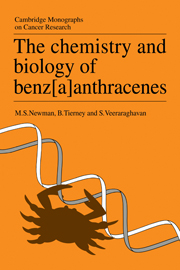11 - Carcinogenicity
Published online by Cambridge University Press: 07 September 2010
Summary
Introduction
‘There is only one unambiguous experimental method to determine cardnogenicity; it is to ascertain if your compound produces cancer in animals.’ (Quoted from Huggins, 1979.) Cancer induction is a complex process, still not completely understood, and the experimental demonstration of a chemical's carcinogenic properties is dependent on a number of variables such as the dose administered, the species, age and sex of the animal employed, the mode of administration, the use of cocarcinogens or promotors, the time period of experimental observation and ensuring that sufficient numbers of animals survive the experiment for adequate statistical analyses to be performed. Conflicting data are occasionally reported from laboratories in which different procedures are employed. Also difficulties arise when attempts are made to compare the relative potency of various chemicals as carcinogens. Iball (1939) proposed that there are two measurable parameters involved in determining the potency of carcinogenic compounds; one is the percentage incidence of tumours, the other is the average latent period for the appearance of tumours. Giving equal weight to both these factors, Iball constructed an index of carcinogenic potency for various chemical carcinogens; 7,12-DMBA was by far the most potent chemical tested. An additional indicator of carcinogenic potential, which is often reported from skin-painting experiments, is the number of tumours per animal. Comprehensive tables on the carcinogenicity of benz[a]anthracene and its derivatives have been reported by Dipple et al. (1984a).
- Type
- Chapter
- Information
- The Chemistry and Biology of Benz[a]anthracenes , pp. 160 - 186Publisher: Cambridge University PressPrint publication year: 1988



